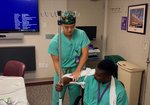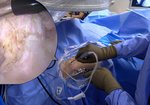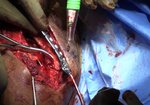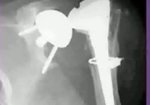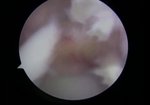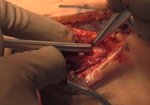
NYU Langone Orthopedics
- 2024 Comprehensive Spine Course
- Sixth International NYU Langone Hip Dysplasia Symposium
- 2022 Comprehensive Spine Course
- Fifth International NYU Langone Hip Dysplasia Symposium: The Island of Knowledge in Hip Dysplasia
- 2nd Annual Sports Medicine Symposium: The Golf and Soccer Athlete
- 2023 Featured Videos
- 2021 Fourth International Hip Dysplasia Symposium
- Featured Videos from NYU Langone Orthopedics
- 2021 Comprehensive Spine Course
- 2020 Comprehensive Spine Course
- 2019 Featured Videos from NYU Langone Orthopedics
- Sports Medicine Symposium: The Modern Athlete
- NYU Langone Orthopedic Webinar Series
- NYU Langone Orthopedics Faculty on VuMedi
- 44th Annual Howard Rosen Memorial Tri-State Trauma Symposium
- Events
Playback speed
10 seconds
Treatment of a Segmental Bone Defect Using the Induced Membrane Technique: The Masquelet Procedure
5,659 views
June 13, 2016
Purpose:
Posttraumatic bone defects in the setting of severe, open injuries of the lower extremity ...
read more ↘ present a significant challenge for orthopaedic trauma surgeons. The induced-membrane technique, also known as the Masquelet technique, has been shown to be generally successful in achieving bony union. This video demonstrates the use of the Masquelet technique for a large (18cm) femoral defect.
Methods:
The Masquelet technique is a two-stage process. The first stage involves debridement of all devitalized tissue, using open reduction and internal fixation, and placement of a cement spacer with or without antibiotics. In the second stage, which is carried out at least 6 weeks after the first, the spacer is removed and the resulting void is filled with bone graft.
Results:
This surgical case video reviews the relevant patient injury presentation, initial management, and indications for the Masquelet technique. The second stage of the Masquelet technique is featured in this video.
Conclusions:
The Masquelet technique is a generally reliable method for treating large segmental bone defects. Additionally, this relatively simple technique is suitable for both infected and non-infected cases.
↖ read less
Posttraumatic bone defects in the setting of severe, open injuries of the lower extremity ...
read more ↘ present a significant challenge for orthopaedic trauma surgeons. The induced-membrane technique, also known as the Masquelet technique, has been shown to be generally successful in achieving bony union. This video demonstrates the use of the Masquelet technique for a large (18cm) femoral defect.
Methods:
The Masquelet technique is a two-stage process. The first stage involves debridement of all devitalized tissue, using open reduction and internal fixation, and placement of a cement spacer with or without antibiotics. In the second stage, which is carried out at least 6 weeks after the first, the spacer is removed and the resulting void is filled with bone graft.
Results:
This surgical case video reviews the relevant patient injury presentation, initial management, and indications for the Masquelet technique. The second stage of the Masquelet technique is featured in this video.
Conclusions:
The Masquelet technique is a generally reliable method for treating large segmental bone defects. Additionally, this relatively simple technique is suitable for both infected and non-infected cases.
↖ read less
Comments 3
Login to view comments.
Click here to Login













































